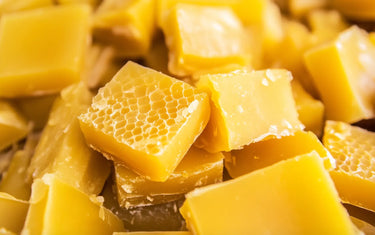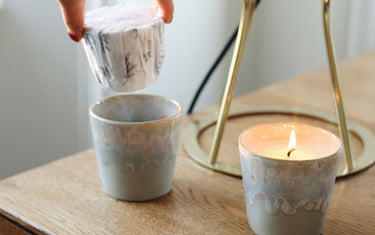7 min read / 8 May 2023 / Laura Garvin Gomez
How to Clean Essential Oil Spills and Stains
Discover expert tips and tricks for cleaning essential oil spills and stains with our comprehensive guide.
Share this post

How to clean up an essential oil spill on the floor
How do you deal with spilled essential oil on your skin?
How do I remove essential oil stains in a bathtub?
Do diluted essential oils stain clothes?
How do I pour essential oils without spilling them?
Dealing with essential oil spills and stains can be tricky, especially if they have fallen onto clothes, flooring or other pieces of furniture.
If left untreated, essential oils can leave long-lasting stains, so they need to be cleaned up as quickly as possible.
Most commercial cleaning products are not designed to withstand oil spills, so you need to take a slightly different approach.
Here we look at how to clean essential oil spills and stains so you know what to do if you have an accident.
How to clean up an essential oil spill on the floorSpilled essential oils on floor surfaces are just as likely to happen as spilling it onto your skin or clothing, so you may need some help on how to ensure it doesn’t affect the material:
|

How do you deal with spilled essential oil on your skin?
If you spill diluted essential oil onto your skin, in most cases, this should not cause any problems, especially if you have carried out a patch test before applying the oil to your body.
Dealing with undiluted essential oils is slightly different, as they are more concentrated and can cause allergic reactions and skin irritation if they come into contact with your skin.
If it happens directly or via a piece of clothing you are wearing or piece of furniture you have touched, you should respond in the same way.
- Use soap and warm water to wash it off your skin.
- If redness or irritation continues, apply some coconut oil or jojoba oil to soothe the area.
- Topical or antihistamine medications can also help if itching persists.
You may want to consult your doctor if you continue to experience issues after washing the oil off your skin.

How do I remove essential oil stains in a bathtub?
Most essential oils can be diluted and used in a bath, allowing you to relax and soak in the nutrients and health benefits they have to offer.
However, there may be occasions where some of the residue of the oil is left on the bath after the water has drained away, especially on lighter designs.
To remove essential oil stains in a bathtub, try the following:
- Mix equal parts water and baking soda to create a paste and apply this to the stained areas with a cloth using circular motions. Let it rest for 5-10 minutes before washing away (do not try this method on natural stone baths).
- Two parts white vinegar with one part water mixed in a spray bottle can be applied to the stain and left for 15-20 minutes. Wash away to see the results (do not use this on porcelain baths).
- Alternatively, you could mix one part hydrogen peroxide with two parts baking soda. Apply using a cloth and leave for 5-10 minutes before washing away. Always wear clothes when using this method as hydrogen peroxide is particularly abrasive.
Do diluted essential oils stain clothes?Can essential oils stain clothes? The answer is yes, because whether diluted or undiluted – they can leave stains and marks on clothes in some cases. However, there is some action you can take to potentially remove or lighten the stain on your clothing before they become permanent. The most important thing is to react quickly if you spill an essential oil on a piece of clothing. Like any stain, the quicker you take action to remove it, the more likely it is that the mark can be removed. Always take care when cleaning essential oils, especially when undiluted, and wear clothes if necessary to reduce the chances of an allergic reaction. Here are some things you can try to remove an essential oil spill from your clothes, with some of these suggestions acting as an absorbent for essential oils in case of spilling. If you want to know how to remove an essential oil stain from fabric, you can also try the methods below:
|

How do I pour essential oils without spilling them?
Like any liquid, pouring essential oils without spilling can be tricky, as due to the tilt of the bottle the oil can dribble down the side and onto clothing, flooring or furniture.
Try the following helpful trick to give you more control as you pour:
- Cut a plastic drinking straw down to about 2-3 inches in length.
- As you tilt the bottle to pour, rest the straw up against the bottleneck.
- Ensure the bottom of the straw is pointing into the container receiving the oil.
- The oil will dribble, but instead of going down the side of the bottle, it will follow the length of the straw down into the container.
Once you have finished pouring, slowly tilt the bottle back to its vertical position above the container and wipe any spillage that may have run onto the side of the bottle.

No one likes having to deal with an oil spillage, but the tips above should give you a few ideas on how to remove any stains or marks that have been left behind.
Remember not to scrub these solutions too hard into the material, as you could end up damaging the surface or piece of clothing.
Take your time and the necessary precautions to ensure your skin and eyes remain protected, and as long as you react quickly, you have a great chance of remaining stain free.









